stress and me – Part 3 of 3
This part of my report is about stress-related illnesses. If you would first like to know why I am dealing with stress, what stress actually is, and why it can make you ill, then read the first part of my report first. If you want to know what stressors we have in the industry and what they do to us, read the second part of my report first.
I wanted to know the following:
- Is there a link between the event industry, increased stress levels, and an increased incidence of stress-related illnesses?
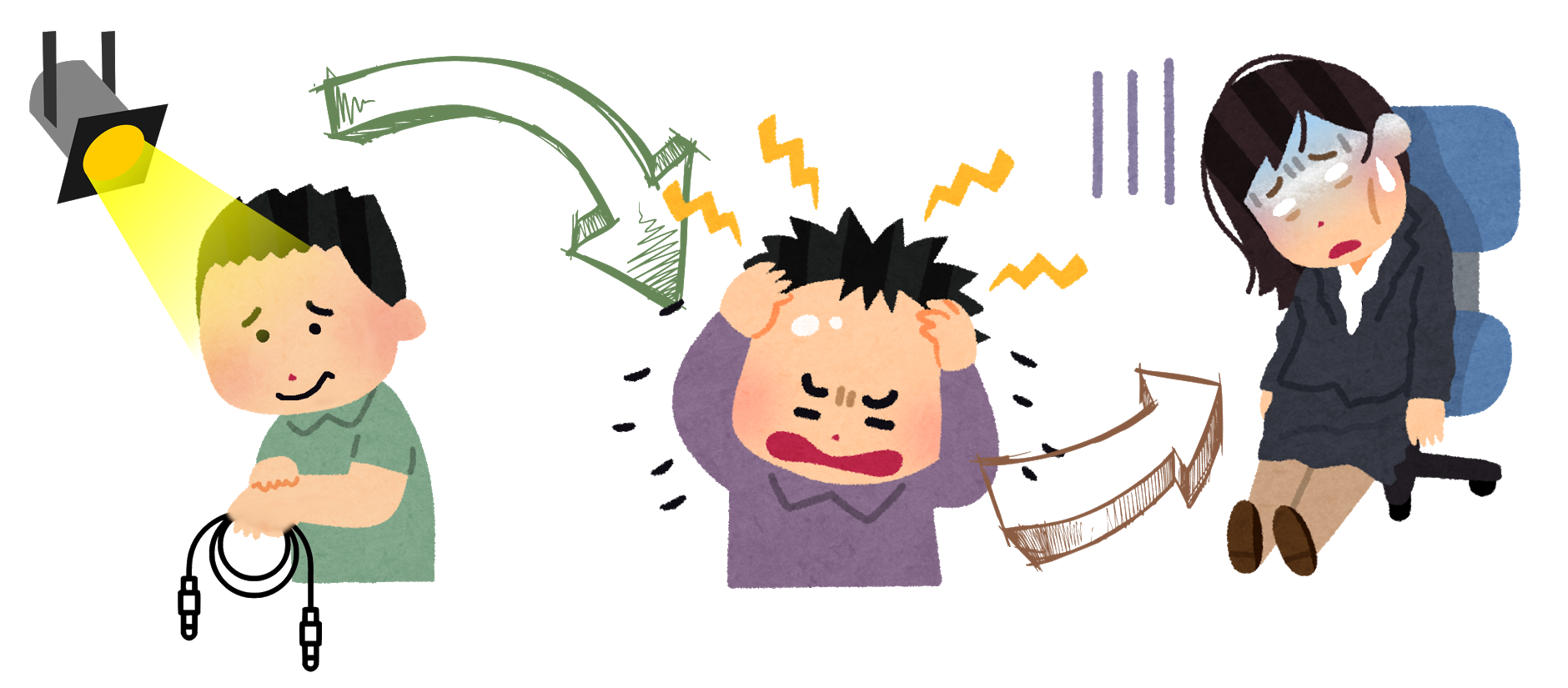 |
And I clarified this in the first part:
- What stress actually is and
- the current state of research on stress-related illnesses.
And in the second part, I established
- what stressors there are in the event industry
- that we have an increased stress level and
- that stressors and stress levels are related.
In this part of my report, I am now investigating
- whether we have more stress-related illnesses in the event industry and
- whether stress levels and stress-related illnesses are connected.
Stress Symptoms
Originally, I only wanted to ask about stress-related illnesses in my survey. To do this, I had to formulate the question in such a way that the respondents could only indicate illnesses that had also been diagnosed. Otherwise there would be a huge mix of subjective perceptions.
However, as there are also people who don't like to go to the doctor often, but who may still have a stress-related illness, I added a special section. I took the questions for this special section on typical stress symptoms from the Burnout Assessment Tool (BAT) by Schaufeli et al. (2020). I wanted to prevent these people and their symptoms from slipping through my fingers.
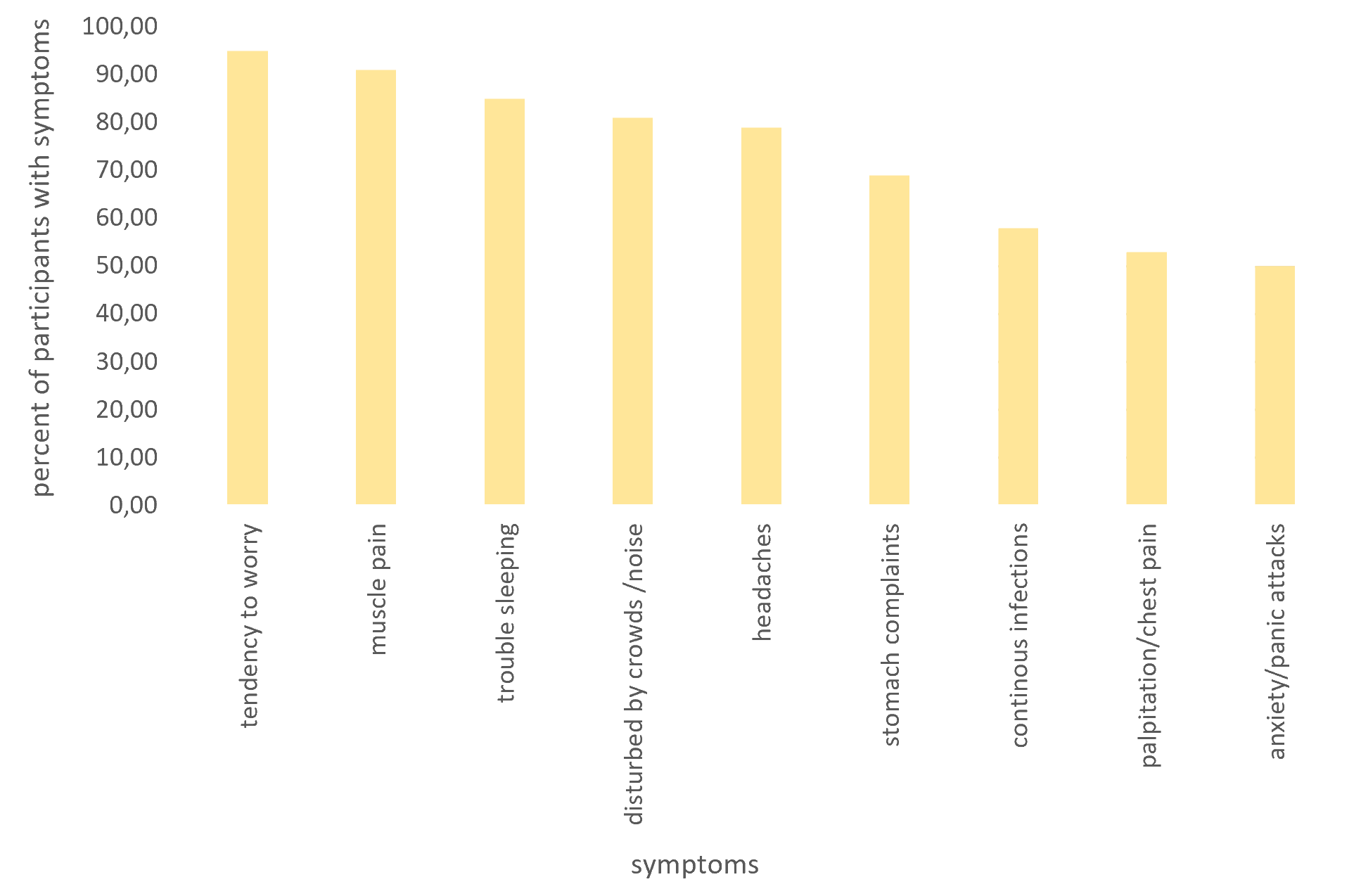 |
Of the 1,142 participants, 1,138 (99.65%) reported one or more symptoms related to stress.
In the graph you can see that 95% of respondents have a tendency to worry. 91% suffer from muscle pain, 81% feel disturbed by noise and crowds and 50% still have anxiety or panic attacks. Of course, these are subjectively felt symptoms without a diagnosis. Anxiety disorders were also asked about once again in the diagnoses section and 16% stated that they had such a diagnosis. The discrepancy may, for example, be due to the fact that many people do not see a doctor to have the illness diagnosed.
Nevertheless, I think the figures are quite high. There were only 4 people in the group who had none of the symptoms.
Stress-related diseases
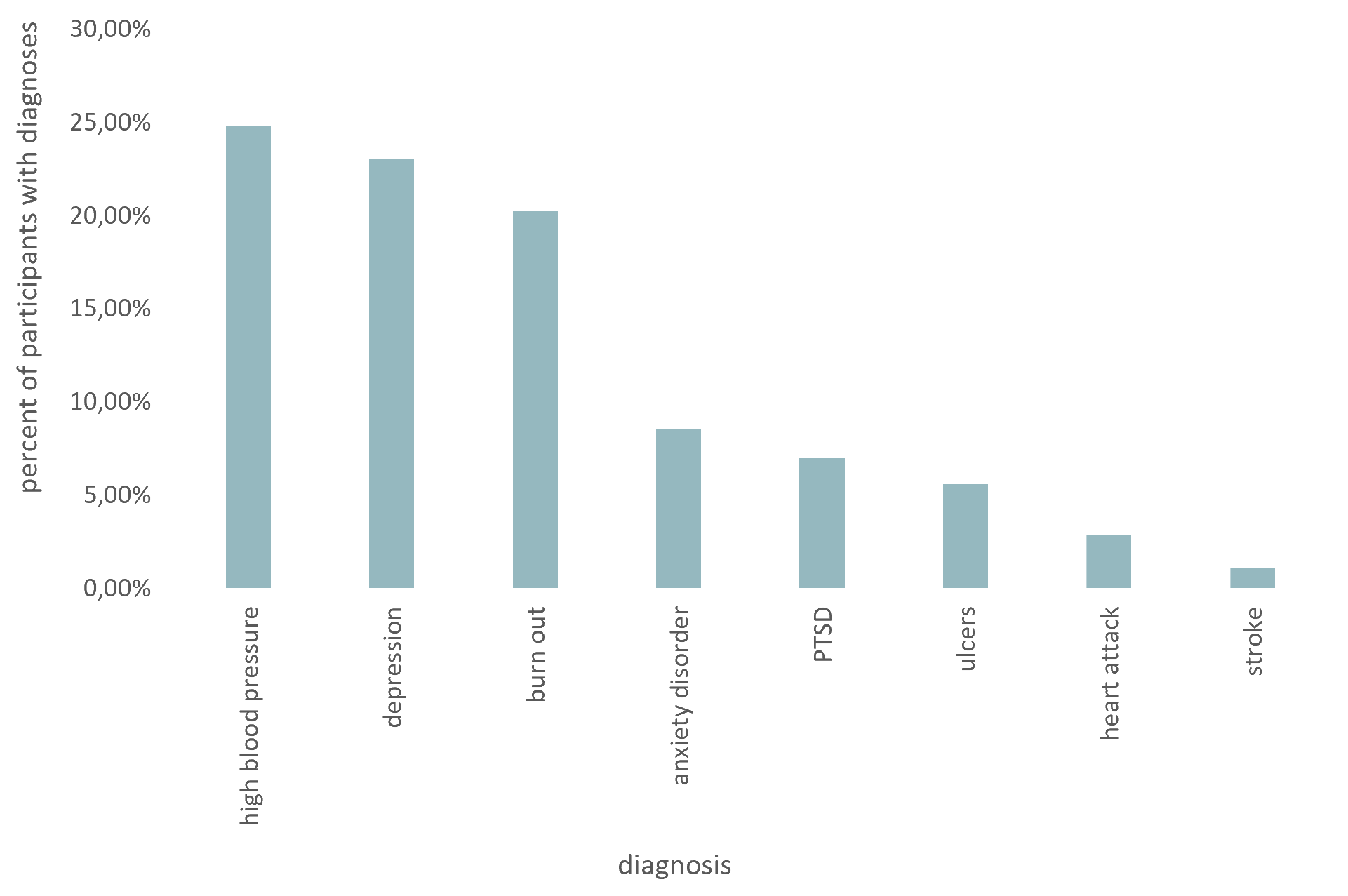 |
A total of 1,201 illnesses were reported by 577 people (51%). Looking at the diagnoses, there are also some very interesting findings here.
High blood pressure (282 people, 25%) was the most frequently diagnosed illness. Depression was the second most frequently diagnosed illness (263, 23%). This was followed by burn-out syndrome (233, 20 %), anxiety (186 people, 16 %), post-traumatic stress disorder (PTSD) (82.7 %), (stomach) ulcers (66, 6 %), other cardiovascular diseases (57, 5 %), heart attacks (35 people, 3 %) and strokes (15, 1 %).
Diseases compared to the average population
Now this is not very meaningful at first. Because 25% high blood pressure sounds very high, but if you consider that in the normal German-Swiss-Austrian (GSA) population 29% have diagnosed high blood pressure, it doesn't look so bad.
That's why I had to compare the data with that of the population in GSA. To do this, I took the latest figures from the Federal Statistical Office and added them together in proportion to the population using a key. I then compared these figures with my survey results and the following picture emerged:
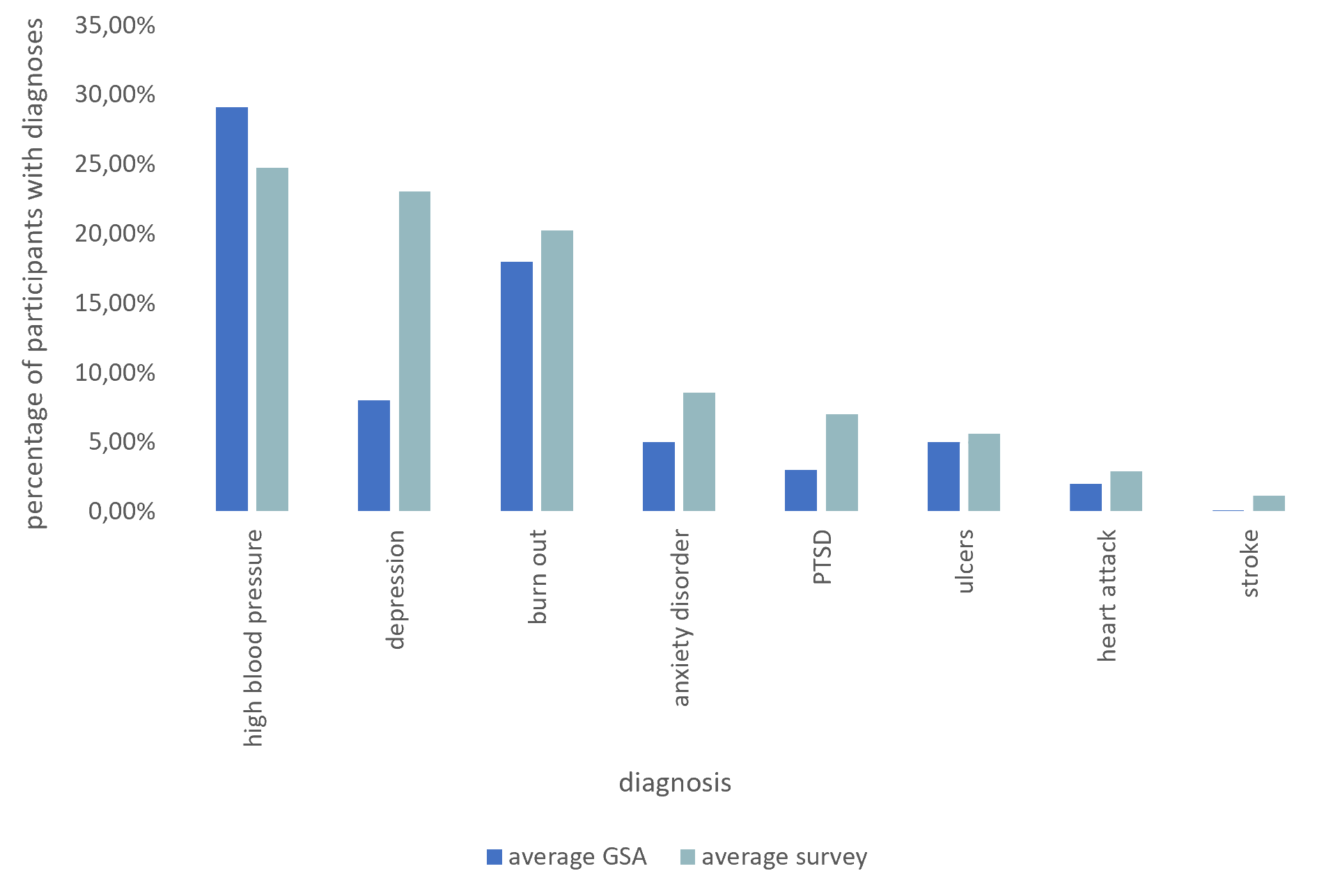 |
In this picture, you can immediately recognise where the supposed problems lie. Namely depression, anxiety disorders, and post-traumatic stress disorder (PTSD).
But let's stay with high blood pressure for a moment. At first glance, the comparison seems pleasing, but unfortunately, the figure is not representative, as the average age of the group surveyed was around 38 years, while the average age of the GSA population is around 42-44, depending on the country. However, high blood pressure is a symptom that only gradually appears from the age of 45 (Jaret, P., 2021). So for a real comparison, you would have to have the GSA values for the population between 18 and 65. And unfortunately, I don't have those. Another point that falsifies the values is that many males are not aware that they suffer from high blood pressure (DHL, n.d.). With 85% of respondents being male, it can also be assumed that there is a high number of unreported cases. So what I'm saying is that we probably don't look as good as we seem here, but I only have circumstantial evidence for this thesis, not proof.
But now to the depression! 23% of respondents said they had a diagnosis of clinical depression. Depending on the country, this applies to 8-9% of the GSA population. In addition, depression is an illness that is diagnosed more frequently in women than in men. As the proportion of male respondents is 85%, the actual discrepancy here is also significantly higher than indicated.
There is also a lot to consider in the area of heart attacks. Depending on the source, 30%-40% of heart attacks are fatal on the same day. This number of heart attacks in the GSA population (2%) therefore also includes those who die of a heart attack. The number of respondents (2.89%) naturally only includes those who survived the heart attack, i.e. neither Ekke, Jörg, Martin nor Woody were able to take part in my survey. So here too, the number of real heart attacks is higher than measured.
To answer my question as to whether we have more stress-related illnesses than the average population: yes, we do. With the exception of high blood pressure, all diagnoses were significantly higher than the average and even there, for the reasons mentioned above, it is questionable whether we are really better off than the rest.
Connection between stress and illness
There really are a lot of studies that prove the connection between stress and stress-related diseases. But as you know I wanted to check whether this is really connected within my group. If you haven't read part 2, take another quick look at the example of ice cream and drowning. If there was no correlation between stress levels and diagnoses and I looked at the people in my group with extremely high stress levels, they should have roughly the same number of diagnoses as the average. But that is not the case. The average respondent had 1.9 diagnoses. The particularly stressed people (PSS >26) had 4.9 diagnoses, i.e. more than twice as many.
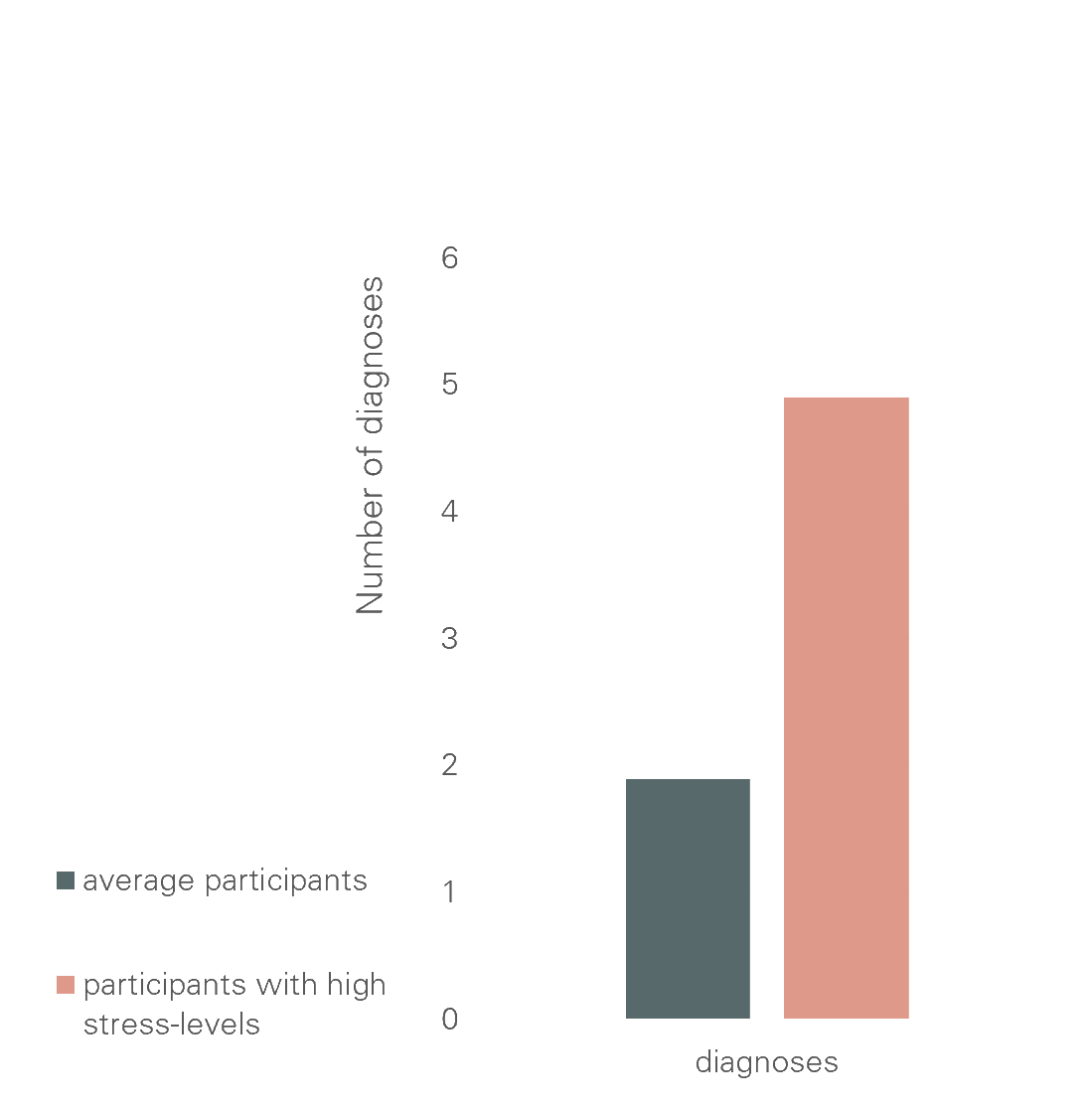 |
I also tested the thesis the other way around: Respondents with more than 13 diagnoses had an average stress level of 23.42, while the average respondent had a stress level of 16.95.
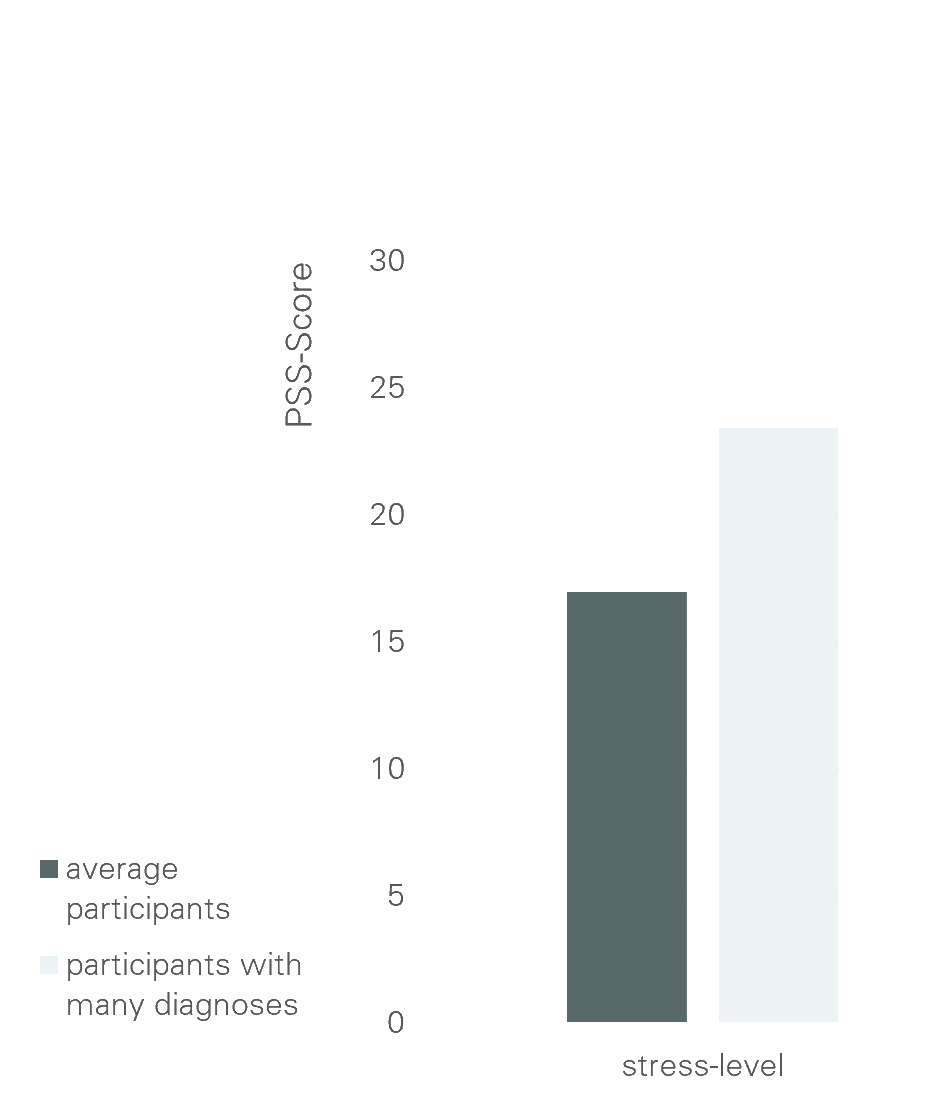 |
This observation suggests that stress is linked to the increased incidence of stress-related diseases.
I have statistically tested all these data and assumptions to make sure that I have not obtained any random results and that my findings are really reliable. If you are interested, you can read about this in my study. The result of the calculations was that all the results are reliable, except for the assumption that we have more high blood pressure than the average, which is not surprising.
We now have to let that sink in, because what these figures tell us is that our job stresses us out so much that it makes us ill. And more so than people in other jobs.
Of course, the first thing we want to know now is what we can do about it, and I've put a lot of thought and research into that, but that's a topic for another day.